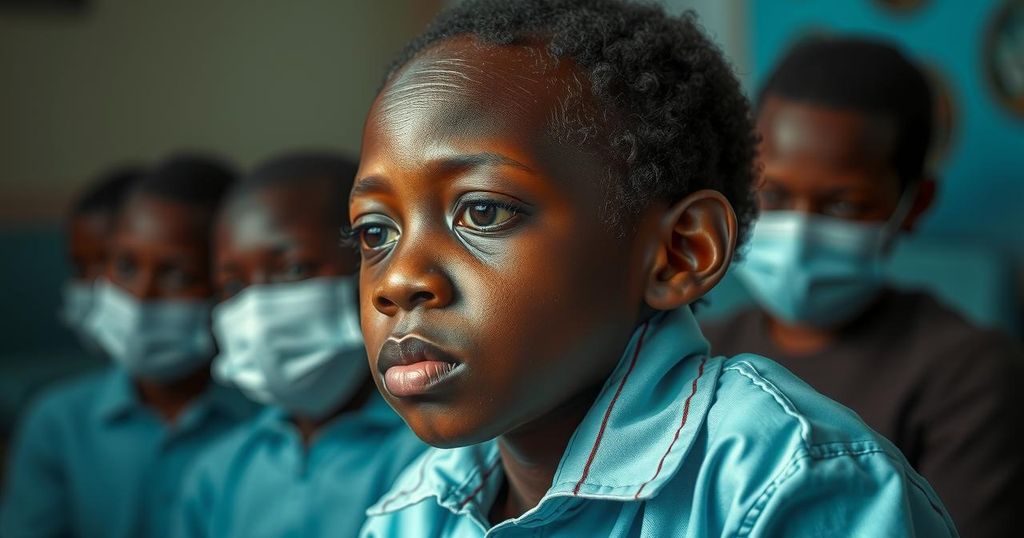Lifestyle
World news
AFRICA, ASSOCIATED PRESS, CONGO (KINSHASA), DEMOCRATIC REPUBLIC OF CONGO, DISEASE OUTBREAK, DR, DRC, DRC MINISTRY FOR HEALTH, EMERGENCY RESPONSE, HEALTH, KI, KIKWIT, KWANGO, MEDICINE, MINISTRY FOR HEALTH, MINISTRY OF HEALTH, NATURAL DISASTERS, NEWSWEEK, PANZI, PUBLIC HEALTH, REUTERS, THE ASSOCIATED PRESS, WHO, WORLD HEALTH ORGANIZATION
Lena Nguyen
0 Comments
Investigating the Mysterious Illness Outbreak in the DRC
A mysterious illness in the DRC has caused between 30 and 143 deaths since November, primarily affecting children under 15. Health officials are conducting investigations and laboratory tests to determine the cause. WHO teams are aiding local authorities in managing the outbreak amidst reported discrepancies in fatality numbers. The situation has prompted increased health screenings in international airports.
In the Democratic Republic of Congo (DRC), a mysterious illness has resulted in the deaths of between 30 and 143 individuals since November 10. The majority of fatalities have occurred in Panzi, Kwango province, exhibiting symptoms such as fever, headaches, respiratory complications, and anemia. The World Health Organization (WHO) confirmed ongoing laboratory tests to determine the cause of this undiagnosed disease, with initial results expected shortly from a facility in Kikwit.
Current reports on the number of fatalities vary significantly. The WHO reported 394 cases of the illness in Kwango province with a confirmed 30 deaths. Conversely, a statement from the DRC Ministry of Health cited 79 fatalities, while other sources, including Reuters and The Associated Press, estimate as many as 143 deceased individuals. Notably, a high percentage of the affected population comprises children under 15 years of age.
Efforts are being coordinated to identify the cause, with local health authorities and a WHO team reinforcing surveillance protocols. The challenging rural environment and ongoing rainy season complicate access to affected individuals. The WHO has mobilized international experts to provide support and will conduct tests for various illnesses, including influenza, COVID-19, malaria, and measles. Preliminary findings suggest that some patients may be suffering from malnutrition and anemia, reflecting the broader health crisis in the region.
Given the potential implications of the outbreak, health monitoring at international airports has been heightened, particularly in locations receiving flights from Africa. In the United States, a patient exhibiting flu-like symptoms upon arrival from Tanzania has been isolated, though there is no confirmed connection to the DRC situation.
Experts caution against speculation regarding the outbreak’s wider implications due to the numerous uncertainties involved. Dr. Michael Head from the University of Southampton emphasized the unpredictability of such outbreaks, while Dr. Jake Dunning from the University of Oxford criticized unfounded assumptions linking the illness to broader health threats. He urged a prudent approach that avoids labeling the event as a ‘disease X’ outbreak, emphasizing the importance of trust in local and international health officials as they investigate the unfolding crisis.
The Democratic Republic of Congo (DRC) has a history of health crises, including outbreaks of infectious diseases such as Ebola and malaria. The recent emergence of an undiagnosed illness that has led to significant fatalities in Kwango province has drawn urgent attention from health authorities and international organizations. The complexity of healthcare access in rural regions, especially amid conflict and nutritional deficiencies, exacerbates the challenges faced by health professionals in containing and identifying the disease. The surge in cases, predominantly among children, underscores the vulnerability of this demographic in areas with limited health resources, making the situation particularly concerning for health officials.
The unfolding health crisis in the DRC due to a mysterious illness continues to evolve, with discrepancies in reported fatality figures highlighting the complexity of the outbreak. WHO’s efforts, alongside local health agencies, aim to identify the illness’s cause and mitigate its spread within vulnerable populations. Ongoing investigations and laboratory tests will be pivotal in providing clarity. Additionally, experts advise against speculation about the outbreak’s wider implications, emphasizing the need to support local health officials in their response efforts.
Original Source: www.newsweek.com




Post Comment